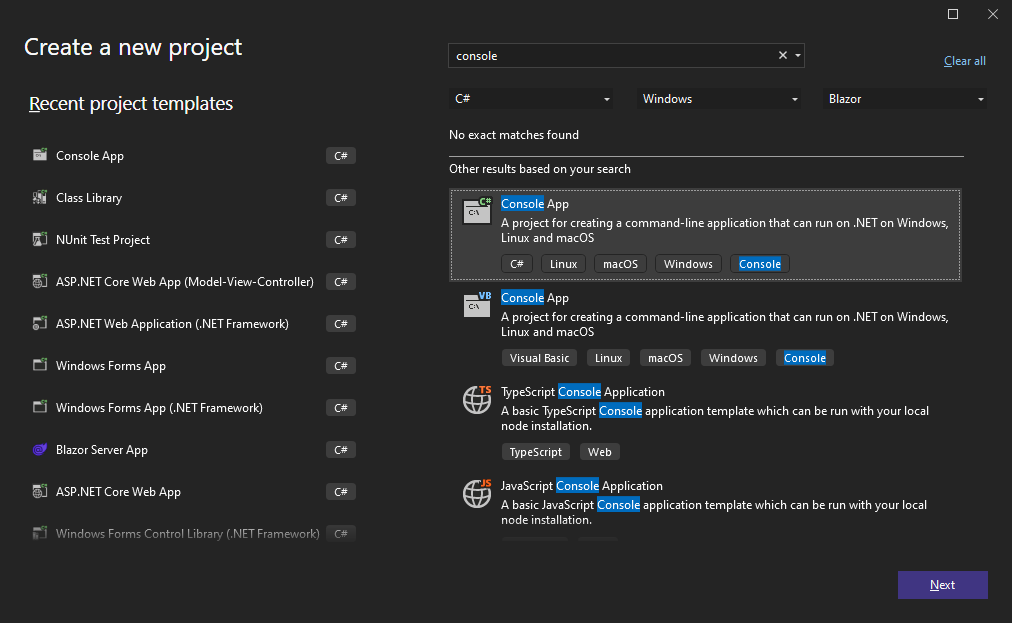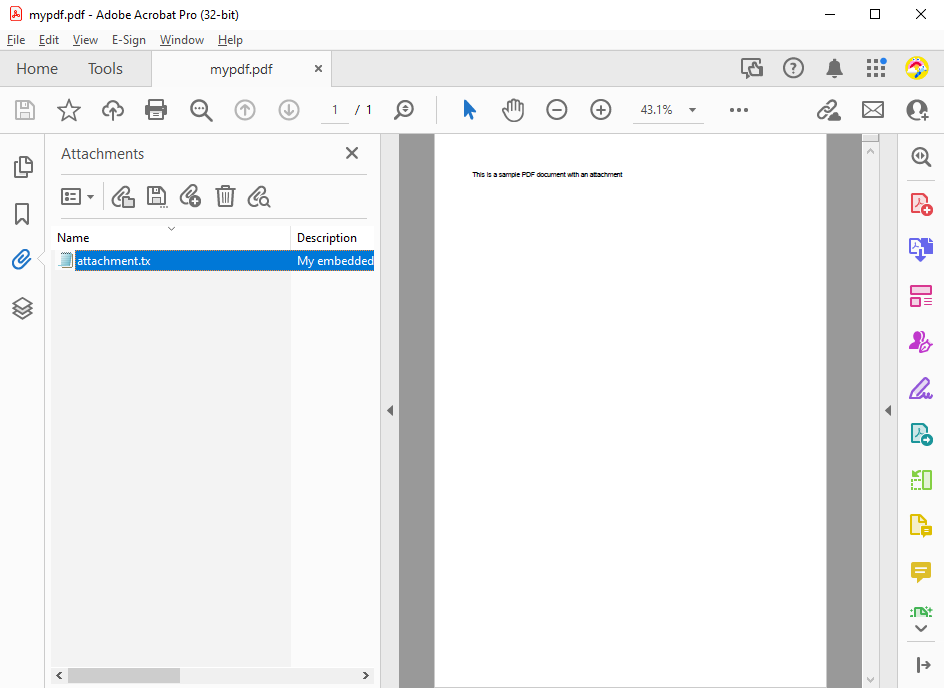PDF/A-3 documents enable the transition from electronic paper to an electronic container that holds both human- and machine-readable versions of a document. An unlimited number of embedded documents for different processes can be included in a PDF/A-3 document. The e-invoice, which attaches a machine-readable XML document to the generated PDF invoice, is a very popular example.
The document processing libraries of TX Text Control make it easy to add and extract attachments from PDF/A-3 documents.
Preparing the Application
For the purposes of this demo, a .NET 6 console application will be created.
-
In Visual Studio, create a new Console App using .NET 6.

-
In the Solution Explorer, select your created project and choose Manage NuGet Packages... from the Project main menu.
Select Text Control Offline Packages from the Package source drop-down.
Install the latest versions of the following package:
- TXTextControl.TextControl.ASP.SDK

Adding Attachments
The following code creates a new PDF document with a text document attached. The Embedded
╰ TXTextControl Namespace
╰ EmbeddedFile Class
The EmbeddedFile class represents a file embedded in another document. class represents the embedded file and can be added to the document using the Embedded
╰ TXTextControl Namespace
╰ DocumentSettings Class
╰ EmbeddedFiles Property
Gets or sets an array of EmbeddedFile objects providing the name, data and additional optional properties of files, which are embedded in the current document. collection.
| using System.Text; | |
| using (TXTextControl.ServerTextControl tx = new TXTextControl.ServerTextControl()) { | |
| tx.Create(); | |
| tx.Text = "This is a sample PDF document with an attachment"; | |
| byte[] baAttachment = Encoding.ASCII.GetBytes("This is a textual attachment."); | |
| // create a new embedded file | |
| TXTextControl.EmbeddedFile efAttachment = | |
| new TXTextControl.EmbeddedFile("attachment.tx", baAttachment, null) { | |
| Description = "My embedded text file." | |
| }; | |
| // add the embedded file to TextControl | |
| tx.DocumentSettings.EmbeddedFiles = | |
| new TXTextControl.EmbeddedFile[] { efAttachment }; | |
| // save the document | |
| tx.Save("mypdf.pdf", TXTextControl.StreamType.AdobePDF); | |
| } |
When you open the document in Acrobat Reader, the attachment is listed in the Attachments sidebar.

Extracting Attachments
To extract attachments, the PDF must be loaded into TX Text Control using Load
╰ TXTextControl Namespace
╰ LoadSettings Class
The LoadSettings class provides properties for advanced settings and information during load operations. . The attachments are stored in the Embedded
╰ TXTextControl Namespace
╰ LoadSaveSettingsBase Class
╰ EmbeddedFiles Property
Specifies an array of EmbeddedFile objects which will be embedded in the saved document. array of attachments.
| using (TXTextControl.ServerTextControl tx = new TXTextControl.ServerTextControl()) { | |
| tx.Create(); | |
| TXTextControl.LoadSettings loadSettings = new TXTextControl.LoadSettings(); | |
| tx.Load("mypdf.pdf", TXTextControl.StreamType.AdobePDF, loadSettings); | |
| foreach (TXTextControl.EmbeddedFile embeddedFile in loadSettings.EmbeddedFiles) { | |
| System.IO.File.WriteAllText( | |
| embeddedFile.FileName, | |
| Encoding.ASCII.GetString((byte[])embeddedFile.Data)); | |
| } | |
| } |
TX Text Control provides comprehensive functionality for creating, manipulating, and analyzing PDF documents. To get started with TX Text Control, take a look at the Getting Started section.

